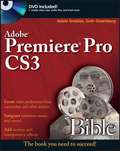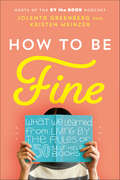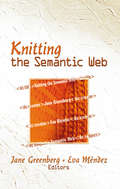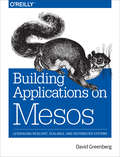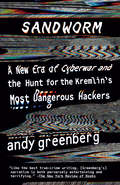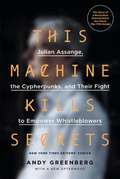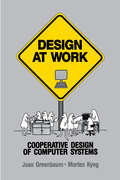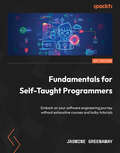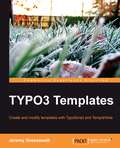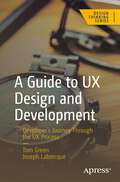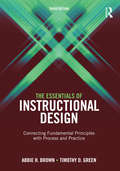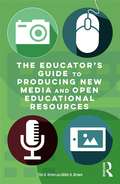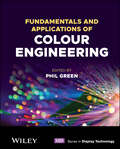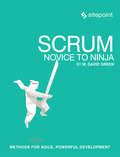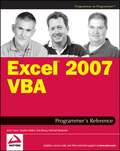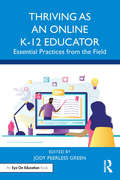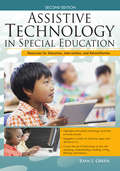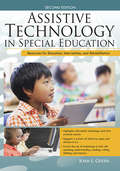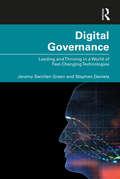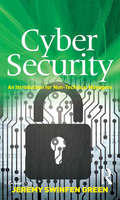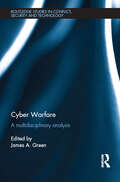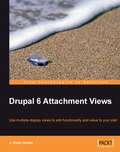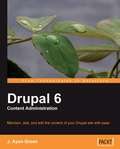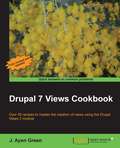- Table View
- List View
Adobe Premiere Pro CS3 Bible
by Seth Greenberg Adele DroblasGo from the basics to professional video production as you master the ins-and-outs of the latest version of Adobe's desktop digital video application, Adobe Premiere Pro CS3. This updated and expanded edition of Adobe Premiere Pro Bible covers Premiere Pro CS3's powerful new features with pages of step-by-step tutorials, tips, and tricks. It's the comprehensive guide you need to succeed with Premiere Pro CS3. Build a video production clip by clip with the Timeline, mix audio and create transitional effects, and much more.
How to Be Fine: What We Learned from Living by the Rules of 50 Self-Help Books
by Jolenta Greenberg Kristen MeinzerA humorous and insightful look into what advice works, what doesn’t, and what it means to transform yourself, by the co-hosts of the popular By the Book podcast.In each episode of their podcast By the Book, Jolenta Greenberg and Kristen Meinzer take a deep dive into a different self-help book, following its specific instructions, rules, and advice to the letter. From diet and productivity to decorating to social interactions, they try it all, record themselves along the way, then share what they’ve learned with their devoted and growing audience of fans who tune in.In How to Be Fine, Jolenta and Kristen synthesize the lessons and insights they’ve learned and share their experiences with everyone. How to Be Fine is a thoughtful look at the books and practices that have worked, real talk on those that didn’t, and a list of philosophies they want to see explored in-depth. The topics they cover include:Getting off your deviceEngaging in positive self-talkDownsizingAdmitting you’re a liarMeditationGoing outsideGetting in touch with your emotionsSeeing a therapistBefore they began their podcast, Jolenta wanted to believe the promises of self-help books, while Kristen was very much the skeptic. They embraced their differences of opinion, hoping they’d be good for laughs and downloads. But in the years since launching the By the Book, they’ve come to realize their show is about much more than humor. In fact, reading and following each book’s advice has actually changed and improved their lives. Thanks to the show, Kristen penned the Amish romance novel she’d always joked about writing, traveled back to her past lives, and she broached some difficult conversations with her husband about their marriage. Jolenta finally memorized her husband’s phone number, began tracking her finances, and fell in love with cutting clutter.Part memoir, part prescriptive handbook, this honest, funny, and heartfelt guide is like a warm soul-baring conversation with your closest and smartest friends.
Knitting the Semantic Web
by Jane Greenberg Eva MéndezThe Semantic Web, extends the popular, day-to-day Web, enabling computers and people to effectively work together by giving information well-defined meaning. Knitting the Semantic Web explains the interdisciplinary efforts underway to build a more library-like Web through “semantic knitting.” The book examines foundation activities and initiatives leading to standardized semantic metadata. These efforts lead to the Semantic Web—a network able to support computational activities and provide people with services efficiently. Leaders in library and information science, computer science, and information intensive domains provide insight and inspiration to give readers a greater understanding of the evolution of the Semantic Web. Librarians and information professionals are uniquely qualified to play a major role in the development and maintenance of the Semantic Web. Knitting the Semantic Web closely examines this crucial relationship in detail. This single source reviews the foundations, standards, and tools underlying the Semantic Web and presents thoughtful perspectives in the context of 2.0 developments. Many chapters include figures to illustrate concepts and ideas, and the entire text is extensively referenced. Topics in Knitting the Semantic Web include: RDF, its expressive power, and its ability to underlie the new Library catalog card for the coming century the value and application for controlled vocabularies SKOS (Simple Knowledge Organization System), the newest Semantic Web language managing scheme versioning in the Semantic Web Physnet portal service for physics Semantic Web technologies in biomedicine developing the United Nations Food and Agriculture ontology Friend Of A Friend (FOAF) vocabulary specification—with a real world case study at a university Web/Library 2.0 and more Knitting the Semantic Web is a stimulating resource for professionals, researchers, educators, and students in library and information science, computer science, information architecture, Web design, and Web services.
Building Applications on Mesos
by David GreenbergHow can Apache Mesos make a difference in your organization? With this practical guide, you'll learn how this cluster manager directs your datacenter's resources, and provides real time APIs for interacting with (and developing for) the entire cluster. You'll learn how to use Mesos as a deployment system, like Ansible or Chef, and as an execution platform for building and hosting higher-level applications, like Hadoop.Author David Greenberg shows you how Mesos manages your entire datacenter as a single logical entity, eliminating the need to assign fixed sets of machines to applications. You'll quickly discover why Mesos is the ultimate DevOps tool.Understand Mesos architecture, and learn how it manages CPU, memory, and other resources across a clusterBuild an application on top of Mesos with Marathon, a platform for hosting services on MesosCreate new, production-ready frameworks for MesosWrite a custom executor to provide richer interaction between the Mesos scheduler and workersDive into advanced topics, including the reconciliation process, Docker integration, dynamic reservations, and persistent volumesLearn about today's Mesos initiatives that will likely become tomorrow's features
Sandworm: A New Era of Cyberwar and the Hunt for the Kremlin's Most Dangerous Hackers
by Andy Greenberg"With the nuance of a reporter and the pace of a thriller writer, Andy Greenberg gives us a glimpse of the cyberwars of the future while at the same time placing his story in the long arc of Russian and Ukrainian history." —Anne Applebaum, bestselling author of Twilight of DemocracyThe true story of the most devastating act of cyberwarfare in history and the desperate hunt to identify and track the elite Russian agents behind it: "[A] chilling account of a Kremlin-led cyberattack, a new front in global conflict" (Financial Times).In 2014, the world witnessed the start of a mysterious series of cyberattacks. Targeting American utility companies, NATO, and electric grids in Eastern Europe, the strikes grew ever more brazen. They culminated in the summer of 2017, when the malware known as NotPetya was unleashed, penetrating, disrupting, and paralyzing some of the world's largest businesses—from drug manufacturers to software developers to shipping companies. At the attack's epicenter in Ukraine, ATMs froze. The railway and postal systems shut down. Hospitals went dark. NotPetya spread around the world, inflicting an unprecedented ten billion dollars in damage—the largest, most destructive cyberattack the world had ever seen.The hackers behind these attacks are quickly gaining a reputation as the most dangerous team of cyberwarriors in history: a group known as Sandworm. Working in the service of Russia's military intelligence agency, they represent a persistent, highly skilled force, one whose talents are matched by their willingness to launch broad, unrestrained attacks on the most critical infrastructure of their adversaries. They target government and private sector, military and civilians alike.A chilling, globe-spanning detective story, Sandworm considers the danger this force poses to our national security and stability. As the Kremlin's role in foreign government manipulation comes into greater focus, Sandworm exposes the realities not just of Russia's global digital offensive, but of an era where warfare ceases to be waged on the battlefield. It reveals how the lines between digital and physical conflict, between wartime and peacetime, have begun to blur—with world-shaking implications.
This Machine Kills Secrets
by Andy GreenbergWho Are The Cypherpunks? This is the unauthorized telling of the revolutionary cryptography story behind the motion picture The Fifth Estate in theatres this October, and We Steal Secrets: The Story of Wikileaks, a documentary out now. WikiLeaks brought to light a new form of whistleblowing, using powerful cryptographic code to hide leakers' identities while they spill the private data of government agencies and corporations. But that technology has been evolving for decades in the hands of hackers and radical activists, from the libertarian enclaves of Northern California to Berlin to the Balkans. And the secret-killing machine continues to evolve beyond WikiLeaks, as a movement of hacktivists aims to obliterate the world's institutional secrecy. Forbes journalist Andy Greenberg has traced its shadowy history from the cryptography revolution of the 1970s to Wikileaks founding hacker Julian Assange, Anonymous, and beyond. This is the story of the code and the characters--idealists, anarchists, extremists--who are transforming the next generation's notion of what activism can be. With unrivaled access to such major players as Julian Assange, Daniel Domscheit-Berg, and WikiLeaks' shadowy engineer known as the Architect, never before interviewed, Greenberg unveils the world of politically-motivated hackers--who they are and how they operate.
Design at Work: Cooperative Design of Computer Systems
by Joan GreenbaumThe contributors to this important volume begin with a simple premise: Computer system development is difficult, not primarily because of the complexity of technical problems, but because of the social interaction involved when users and designers learn to create programs and express ideas together. Based on this important concept, they offer concrete suggestions for ways that system developers can experiment with new perspectives and techniques for cooperating with users -- especially during the early phases of the design process. The editors' primary goal is to stimulate the creation of useful computer systems -- systems that support and sustain the fragile relationship of the people, the working environment, and the computer technology itself.
Fundamentals for Self-Taught Programmers: Embark on your software engineering journey without exhaustive courses and bulky tutorials
by Jasmine GreenawayAn absolute beginner's guide to strengthening the fundamentals before learning your first programming languagePurchase of the print or Kindle book includes a free PDF eBookKey FeaturesExplore fundamental computer science concepts from data structures through to object-oriented programmingProgress from understanding the software engineering landscape to writing your first programAuthored by a Microsoft community insider and filled with case studies from software engineering rolesBook DescriptionSoftware engineering is a set of techniques, including programming, within the computer science discipline associated with the development of software products. This practical guide to software engineering will enable aspiring and new developers to satisfy their curiosity about the industry and become ready to learn more about the basics before beginning to explore programming languages, along with helping junior and upcoming developers to effectively apply their knowledge in the field. The book begins by providing you with a comprehensive introduction to software engineering, helping you gain a clear, holistic understanding of its various sub-fields. As you advance, you'll get to grips with the fundamentals of software engineering, such as flow control, data structures and algorithms. The book also introduces you to C# and guides you in writing your first program. The concluding chapters will cover case studies, including people working in the industry in different engineering roles, as well as interview tips and tricks and coding best practices. By the end of this programming book, you'll have gained practical knowledge of the implementation and associated methodologies in programming that will have you up and running and productive in no time.What you will learnGain an understanding of the software engineering landscapeGet up and running with fundamental programming concepts in C#Implement object-oriented programming (OOP) in C#Gain insights on how to keep the code readable and reusableDiscover various tips and tricks to efficiently prepare for a software engineering interviewImplement various popular algorithms using C#Who this book is forThis book is for anyone who is curious about programming and interested in entering the field of software engineering by beginning at the fundamentals. No prior knowledge of computer science or software engineering is necessary.
TYPO3 Templates
by Jeremy GreenawaltThis book uses a clear, conversational style to teach everything from the simple to the complex in an easy-to-read narrative. The entire book goes through one complete example project to build a company website, and each chapter adds functionality to the final product as the readers learns about the concepts. Every concept and technique is reinforced with working example code, and illustrations and screenshots are used to explain even further when necessary.If you are a developer, designer, or a site builder who wants to get the most out of TYPO3 whether you are building multiple websites for clients or optimizing their company's site then this book is for you.It is written for new or experienced users at all levels, but some basic experience with TYPO3 editing and installation is expected.
A Guide to UX Design and Development: Developer’s Journey Through the UX Process (Design Thinking)
by Tom Green Joseph LabrecqueGain a thorough understanding of the two pillars of any User Experience project: the mission and the process. The mission is to keep the user in mind at each step or milestone as the developer progresses through the project. The process is how that mission is accomplished through collaboration and the use of research, design and development technologies. This book walks you through a developer's journey through the UX process, from start to finish. A Guide to UX Design and Development concentrates on the intersection of what is called “DesignOps” and “DevOps.” That intersection is where collaboration between all members of the team, including stakeholders and clients, occurs and neither DesignOps nor DevOps can go beyond being considered just buzzwords if they instead silo design and development. To highlight the UX Mission and illustrate the responsibility developers also hold for the user experience, authors Tom Green and Joseph Labrecque take you through a hypothetical project involving the development of a parking app for a municipal parking authority. As the book progresses, they concentrate on the developer's journey through the whole project from discovery to product release. In this journey, you will see how developers can make an impact and contribute to the user experience. This will include such topics as why there is a need for both a user journey map and a technical journey map. The authors explain why prototyping is not as complicated as it is made out to be because it is simply an early low-cost and disposable minimal viable product that gives the developer a deep understanding of the project's intent in support of the UX Mission. You will also explore the creation and use of design systems and why the developer's role is just as important as the people who create the design system. The role and responsibility of the developer in user testing is discussed in the context of a variety of testing and assessment methods conducted to achieve the UX mission. Finally, you’ll gain an understanding of how design and development deliverables are negotiated, prepared and sent out for research at each step of the process, and how the developer is involved. What You Will Learn Understand the evolving role of the developer in a team-based environmentLearn the five stages of the UX process Discover the importance of collaboration and communication with stakeholders, designers, and developers at every stage of the processLearn a variety of design and development documents created during the UX process Who This Book Is For Developers and designers involved in the UX Process, as well as developers trying to make sense of the confusing amount of information out there regarding their role in the UX process.
The Essentials of Instructional Design: Connecting Fundamental Principles with Process and Practice, Third Edition
by Timothy D. Green Abbie H. BrownThe Essentials of Instructional Design, 3rd Edition introduces the essential elements of instructional design (ID) to students who are new to ID. The key procedures within the ID process--learner analysis, task analysis, needs analysis, developing goals and objectives, organizing instruction, developing instructional activities, assessing learner achievement and evaluating the success of the instructional design--are covered in complete chapters that describe and provide examples of how the procedure is accomplished using the best known instructional design models. Unlike most other ID books, The Essentials of Instructional Design provides an overview of the principles and practice of ID without placing emphasis on any one ID model. Offering the voices of instructional designers from a number of professional settings and providing real-life examples from across sectors, students learn how professional organizations put the various ID processes into practice. This introductory textbook provides students with the information they need to make informed decisions as they design and develop instruction, offering them a variety of possible approaches for each step in the ID process and clearly explaining the strengths and challenges associated with each approach.
The Educator's Guide to Producing New Media and Open Educational Resources
by Tim D. Green Abbie H. BrownDigital video, audio, and text have never been more popular, and educators need to know how to make new media work in all types of learning environments. The Educator’s Guide to Producing New Media and Open Educational Resources provides practical advice on how to produce and use open access resources to support student learning. This realistic "how-to" guide is written for education professionals in any discipline seeking to transform their instruction with technology.
Fundamentals and Applications of Colour Engineering (Wiley Series in Display Technology)
by Phil GreenFUNDAMENTALS AND APPLICATIONS OF COLOUR ENGINEERING EXPERT OVERVIEW OF THE WORLD OF COLOUR ENGINEERING IN THE 21ST CENTURY, WITH NEW, UPDATED TECHNOLOGIES AND A MATLAB TOOLBOX Fundamentals and Applications of Colour Engineering provides important coverage on topics that hold the power to extend our knowledge of colour reproduction, such as colour measurement and appearance and the methods used, with additional discussion of the technologies responsible for reproducing colour across a wide range of devices, together with the colour management systems that are used to connect devices and exchange information. Composed of 20 chapters, the Editor and his team of expert contributors consider the new ICC.2 architecture, an approach that introduces an evolutionary step in colour engineering, ensuring wider possibilities for technology. The text also considers the emerging applications for advanced colour management, such as processing spectral data, handling HDR images, and the capture and reproduction of material appearance. The text is supported by a MATLAB toolbox of relevant functions and data. Fundamentals and Applications of Colour Engineering is a useful reference for anyone involved in the reproduction of colour and a strong supplementary course potential for master???s degrees with a colour science component. Fundamentals and Applications of Colour Engineering includes information on: Instruments and methods of colour measurement, colorimetry, and colour difference, and colour appearance Colour spaces and colour encodings, and characterizing input devices, displays and printers Colour gamut communication and imaging standards, high dynamic range imaging, and HDR Sensor adjustment in colour management, open source tools for colour engineering, and colour transform evaluation Supporting active learning with the inclusion of a toolbox of relevant functions and data, Fundamentals and Applications of Colour Engineering is an essential resource for students in relevant programs of study, and for professionals within colour engineering and reproduction looking to maximize their skill set and keep their skills updated.
Scrum: Methods for Agile, Powerful Development
by M. David GreenWhy should you use Scrum in your web projects? Simply put, it'll enable your team to get more done in less time. Scrum is the most popular agile project management methodology used in web projects today. While most Scrum books tend to be lengthy textbooks that cover every detail of Scrum for all types of organizations, this highly practical book concentrates solely on how best to apply Scrum in web and mobile development projects. In it, you'll learn: An overview of Scrum fundamentals for web and mobile projectsGet familiar with Scrum's roles: Scrum master, product owner, team members, and interested observersUnderstand Scrum's rituals: sprint planning meetings, daily standups, work process, demos, and sprint retrospectivesGain a thorough understanding of the tools used in Scrum: burndown charts, story cards, sprint backlogsTroubleshoot typical Scrum issues
Excel© 2007 VBA Programmer's Reference
by John GreenThis book is aimed squarely at Excel users who want to harness the power of the VBA language in their Excel applications. At all times, the VBA language is presented in the context of Excel, not just as a general application programming language. The Primer has been written for those who are new to VBA programming and the Excel object model. It introduces the VBA language and the features of the language that are common to all VBA applications. It explains the relationship between collections, objects, properties, methods, and events and shows how to relate these concepts to Excel through its object model. It also shows how to use the Visual Basic Editor and its multitude of tools, including how to obtain help. The middle section of the book takes the key objects in Excel and shows, through many practical examples, how to go about working with those objects. The techniques presented have been developed through the exchange of ideas of many talented Excel VBA programmers over many years and show the best way to gain access to workbooks, worksheets, charts, ranges, and so on. The emphasis is on efficiency--that is, how to write code that is readable and easy to maintain and that runs at maximum speed. In addition, the chapters devoted to accessing external databases detail techniques for accessing data in a range of formats. The final four chapters of the book address the following advanced issues: linking Excel to the Internet, writing code for international compatibility, programming the Visual Basic Editor, and how to use the functions in the Win32 API (Windows 32-bit Application Programming Interface).
Thriving as an Online K-12 Educator: Essential Practices from the Field
by Jody Peerless GreenThriving as an Online K-12 Educator is the perfect all-in-one guide to taking your K-12 class online. We know, now more than ever, that teachers have not been equally or systematically trained and resourced to make a sudden transition to online or blended instruction. This concise, accessible book collects time-tested strategies and fresh perspectives from experienced educators to help you smooth out even the most abrupt shift to technology-enhanced teaching and learning. With these insights into institutional supports, effective digital tools, equitable practice, social-emotional considerations, and beyond, you will be better prepared than ever to help your students thrive in online and blended learning environments.
Assistive Technology in Special Education: Resources for Education, Intervention, and Rehabilitation
by Joan GreenFamilies, teachers, and therapists who are searching for an update about how to use the latest technologies to help individuals who struggle with communication, literacy, and learning will benefit from the wealth of practical, well-organized information in this second edition of Assistive Technology in Special Education. The indexed update presents an overview of the uses of technologies to help readers zero in on specific, powerful, cutting-edge resources they can use to enhance success. The book features new tools to improve and compensate for challenges relating to speaking, understanding, reading, writing, thinking and remembering, as well as strategies to help students become more organized and efficient. The use of tablets such as the iPad and smartphones, as well as cloud-based products, are highlighted. Online resources and social networking tools are presented to empower readers to learn about new products as they become available.
Assistive Technology In Special Education: Resources for Education, Intervention, and Rehabilitation (Second Edition)
by Joan GreenFamilies, teachers, and therapists who are searching for an update about how to use the latest technologies to help individuals who struggle with communication, literacy, and learning will benefit from the wealth of practical, well-organized information in this second edition of Assistive Technology in Special Education. The indexed update presents an overview of the uses of technologies to help readers zero in on specific, powerful, cutting-edge resources they can use to enhance success. The book features new tools to improve and compensate for challenges relating to speaking, understanding, reading, writing, thinking and remembering, as well as strategies to help students become more organized and efficient. The use of tablets such as the iPad and smartphones, as well as cloud-based products, are highlighted. Online resources and social networking tools are presented to empower readers to learn about new products as they become available.
Digital Governance: Leading and Thriving in a World of Fast-Changing Technologies
by Jeremy Swinfen Green Stephen DanielsDigital Governance provides managers with a simple and jargon-free introduction to the impact that digital technology can have on the governance of their organisations. Digital technology is at the heart of any enterprise today, changing business processes and the way we work. But this technology is often used inefficiently, riskily or inappropriately. Worse perhaps, many organisational leaders fail to grasp the opportunities it offers and thus fail to "transform" their organisations through the use of technology. This book provides an explanation of the basic issues around the opportunities and risks associated with digital technology. It describes the role that digital technology can play across organisations (and not just behind the locked doors of the IT department), giving boards and top management the insight to develop strategies for investing in and exploiting digital technology as well as arming them with the knowledge required to ask the right questions of specialists and to detect when the answers given are evasive or irrelevant. International in its scope, this essential book covers the fundamental principles of digital governance such as leadership, capability, accountability for value creation and transparency of reporting, integrity and ethical behaviour.
Cyber Security: An Introduction for Non-Technical Managers
by Jeremy Swinfen GreenCyber security involves protecting organisations from cyber risks, the threats to organisations caused by digital technology. These risks can cause direct damage to revenues and profits as well as indirect damage through reduced efficiency, lower employee morale, and reputational damage. Cyber security is often thought to be the domain of specialist IT professionals however, cyber risks are found across and within organisations. Unfortunately, many managers outside IT feel they are ill equipped to deal with cyber risks and the use of jargon makes the subject especially hard to understand. For this reason cyber threats are worse than they really need to be. The reality is that the threat from cyber risks is constantly growing, thus non-technical managers need to understand and manage it. As well as offering practical advice, the author guides readers through the processes that will enable them to manage and mitigate such threats and protect their organisations.
Graduate Savvy: Navigating the World of Online Higher Education (2nd edition)
by Jeffrey L. GreenGraduate Savvy begins with a compelling exploration of online learning as it moves into the heart of the text, which is to help you succeed should you decide to enroll in a web-based program. Topics such as plagiarism, Bloom's Taxonomy, scholarly sources, and academic writing make this a must read for all graduate learners.
Cyber Warfare: A Multidisciplinary Analysis (Routledge Studies in Conflict, Security and Technology)
by James GreenThis book is a multi-disciplinary analysis of cyber warfare, featuring contributions by leading experts from a mixture of academic and professional backgrounds. Cyber warfare, meaning interstate cyber aggression, is an increasingly important emerging phenomenon in international relations, with state-orchestrated (or apparently state-orchestrated) computer network attacks occurring in Estonia (2007), Georgia (2008) and Iran (2010). This method of waging warfare – given its potential to, for example, make planes fall from the sky or cause nuclear power plants to melt down – has the capacity to be as devastating as any conventional means of conducting armed conflict. Every state in the world now has a cyber-defence programme and over 120 states also have a cyber-attack programme. While the amount of literature on cyber warfare is growing within disciplines, our understanding of the subject has been limited by a lack of cross-disciplinary engagement. In response, this book, drawn from the fields of computer science, military strategy, international law, political science and military ethics, provides a critical overview of cyber warfare for those approaching the topic from whatever angle. Chapters consider the emergence of the phenomena of cyber warfare in international affairs; what cyber-attacks are from a technological standpoint; the extent to which cyber-attacks can be attributed to state actors; the strategic value and danger posed by cyber conflict; the legal regulation of cyber-attacks, both as international uses of force and as part of an on-going armed conflict, and the ethical implications of cyber warfare. This book will be of great interest to students of cyber warfare, cyber security, military ethics, international law, security studies and IR in general.
Drupal 6 Attachment Views
by J. Ayen GreenThis is a fun, informative, hands-on learning guide. It uses a real case study in an interactive and informal manner, and presents examples that continue to build on each other. Clear, concise instructions and practical examples mean you can learn quickly how to increase the functionality and value of your web site. If you are a Drupal developer of any level and you are waiting to explore Attachment Views, then this book is for you.
Drupal 6 Content Administration
by J. Ayen GreenThis is a fun, informative, hands-on learning guide that uses an actual case study. In an interactive and informal manner, this guide presents purposeful examples that continue to build on each other. Clear, concise instructions and practical examples mean you can learn quickly how to take care of the content in your Drupal site. This book is designed for those who run the site day-to-day but didn't set it up, and aren't necessarily that well versed in Drupal or web technologies. You could be a content editor, proofreader, graphic artist, feature editor, or anyone else concerned with managing content on a Drupal installation.
Drupal 7 Views Cookbook
by J. Ayen GreenThis is a cookbook containing plenty of easy-to-follow practical recipes with screenshots that will help you in mastering the Drupal Views module. Drupal 7 Views Cookbook is for developers or technically proficient users who are fairly comfortable with the concepts behind websites and the Drupal environment.
